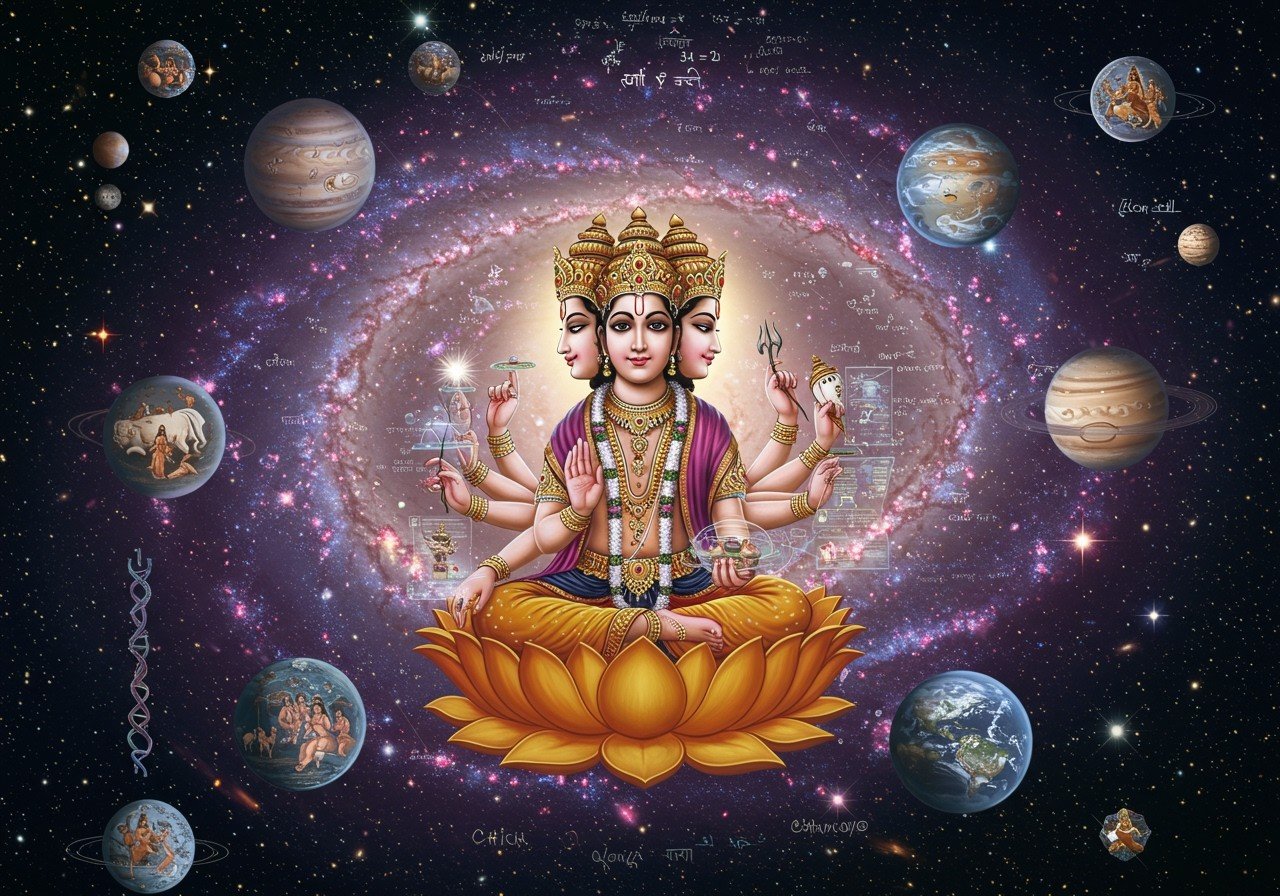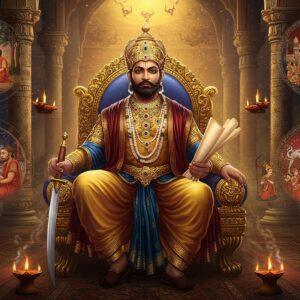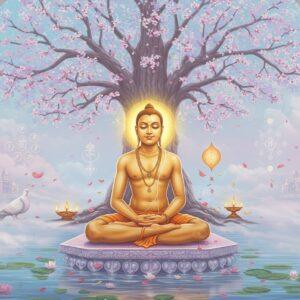
Hindu cosmology and modern science, while seemingly disparate, exhibit intriguing points of convergence. Hinduism, with its ancient roots and rich tradition, describes a vast, multifaceted universe, while modern science relies on empirical observation and mathematical models. Despite their differences in methodology, some concepts in Hindu cosmology resonate with modern scientific theories.
Similarities Between Hindu Cosmology and Modern Science
- Cyclical Time: Hinduism posits a cyclical view of time, where the universe undergoes cycles of creation, preservation, and destruction, known as kalpas. This aligns with modern cosmological theories like the Big Bang and the concept of an oscillating universe, suggesting the cosmos may expand and contract over vast periods.
- Cosmic Egg and Big Bang: The Hindu concept of the universe originating from a cosmic egg, Brahmanda, bears similarity to the Big Bang theory, which states that the universe originated from a singularity. Both propose a starting point for the universe, albeit through different frameworks.
- Multiverse: The idea of multiple universes existing simultaneously is present in both Hindu cosmology and modern physics. Hindu texts, such as the Puranas, describe multiple universes, each with its own Brahma. Similarly, the multiverse theory in modern physics suggests that our universe is just one of many, each with its own physical laws and constants.
- Interconnectedness: Hinduism emphasizes the interconnectedness of all things, with concepts like Indra’s Net illustrating the infinite web of existence. This resonates with modern physics concepts like quantum entanglement, where particles remain linked across vast distances, and the cosmic web, where galaxies are interconnected through filaments of dark matter and gas.
- Maya and Quantum Mechanics: The Hindu concept of Maya, the illusion of the material world, finds parallels in quantum mechanics. Quantum physics suggests that at a subatomic level, the solidity of matter is illusory, with particles existing in multiple states simultaneously. This resonates with the idea that our perceived reality might be a manifestation of a deeper, underlying reality.
- Time Dilation: The idea that time is relative and can be experienced differently by different observers is present in both Hindu cosmology and Einstein’s Theory of Relativity. Hindu scriptures describe variations in the flow of time in different realms, mirroring the relativistic effects of gravity and velocity on time.
- Vedic Empiricism: The Vedic tradition emphasizes observation, experimentation, and empirical evidence in understanding the natural world, mirroring the scientific method. Ancient Vedic texts contain detailed astronomical observations and mathematical calculations, demonstrating a commitment to understanding the universe through observation and analysis.
Differences Between Hindu Cosmology and Modern Science
- Methodology: Modern science relies on the scientific method, which involves observation, experimentation, and data analysis. Hindu cosmology, on the other hand, is rooted in philosophical and spiritual insights derived from ancient texts and traditions, with a focus on understanding the universe through introspection and spiritual practices.
- Theistic vs. Non-Theistic: Hindu cosmology often incorporates a theistic perspective, acknowledging a supreme controller or creator, such as Brahma. Modern scientific theories, in general, do not rely on the existence of a superior controller, focusing primarily on natural explanations for phenomena.
- Scope: Hindu cosmology extends beyond the physical universe, encompassing realms of mind and consciousness, exploring the nature of reality and the soul’s journey. Modern science primarily focuses on the physical universe and its observable phenomena, with a limited exploration of consciousness.
- Age of the Universe: While there is some alignment, some interpretations of Hindu cosmology suggest the universe is significantly older than current scientific estimates, involving vast cycles of creation and destruction. Modern science estimates the age of the universe based on observations and the Big Bang theory.
- Nature of Reality: Some schools of Hindu philosophy consider the physical world an illusion (Maya), while modern science generally considers the physical world real and measurable, focusing on empirical evidence and observable phenomena.
Hindu Cosmology vs. Buddhist Cosmology
While sharing some common ground, Hindu and Buddhist cosmologies diverge on key aspects. Hinduism envisions an eternal universe undergoing cyclical creation and destruction, while Buddhism posits a non-eternal universe eventually ceasing. Deities play a central role in Hindu cosmology, unlike Buddhism’s emphasis on karma and rebirth without a creator god. Explore these differences further in our article Dravidian and Nagara Architecture: A Comparison of Styles.
Scientists on Hindu Cosmology
Prominent scientists like Carl Sagan have acknowledged the advanced astronomical ideas in ancient Hindu texts. Fritjof Capra’s The Tao of Physics explores parallels between Hindu cosmology and quantum physics. Indian physicist Amit Goswami has examined consciousness and quantum mechanics through a Hindu perspective. Learn more about the science behind Puja rituals in our blog post Understanding the Science Behind Puja for Holistic Well-being.
Poojn.in: Supporting Your Spiritual Journey
Connect with Hindu traditions at Poojn.in. We offer a wide variety of spiritual items:
- Murtis: Explore our collection of beautifully crafted Deities, including Lord Shiva Murtis.
- Pooja Items: Enhance your spiritual practice with authentic camphor and other essential items.
Visit Poojn.in today!
Conclusion
The intersection of Hindu cosmology and modern science offers fertile ground for exploring fundamental questions about reality, the universe’s origins, and the interconnectedness of all things. While differences exist, the parallels encourage dialogue between ancient wisdom and contemporary knowledge, offering a deeper understanding of the cosmos. Discover more about Dravidian temples and their role in Hindu rituals by reading Dravidian Temples: Their Role in Hindu Rituals.


